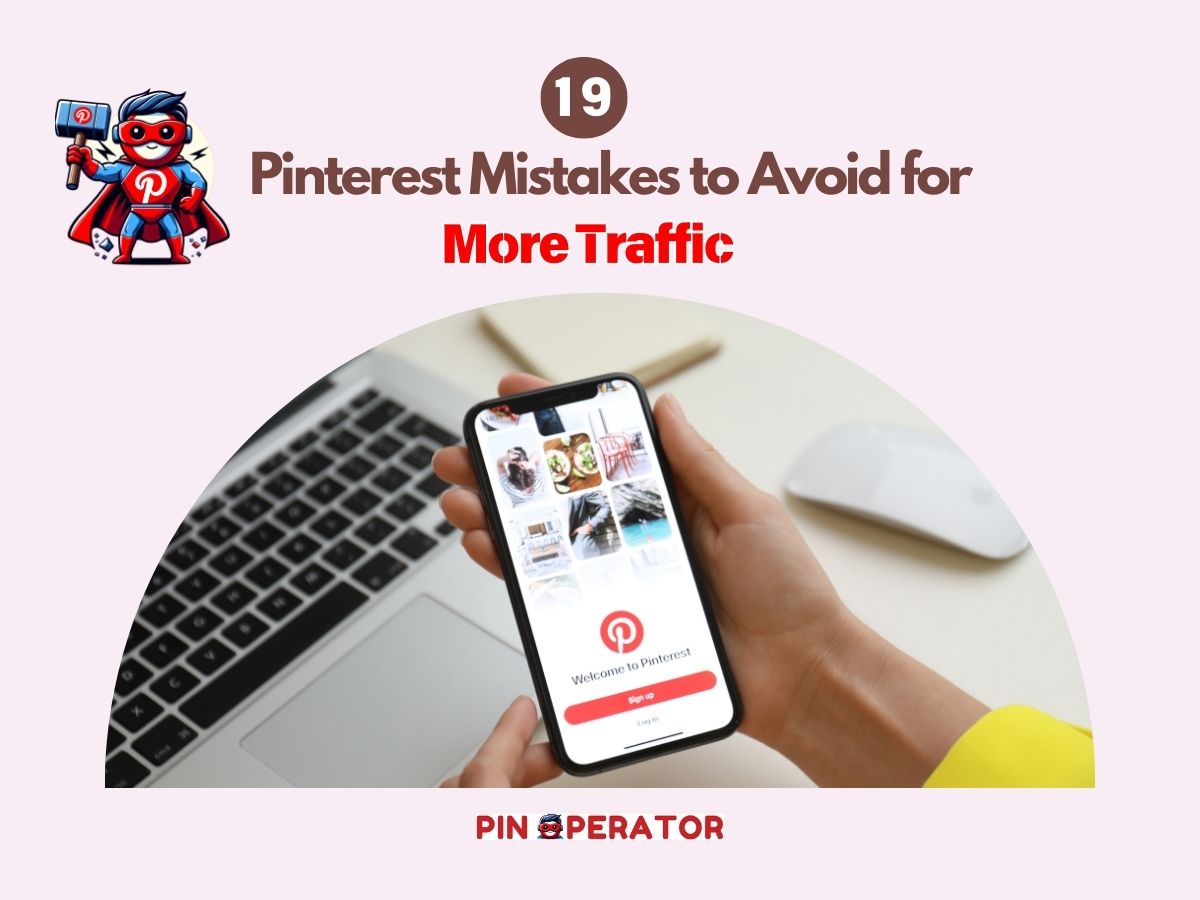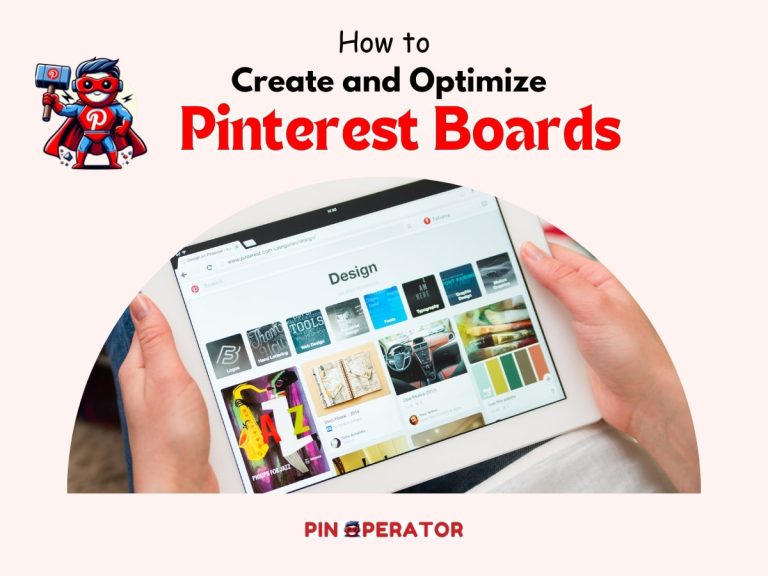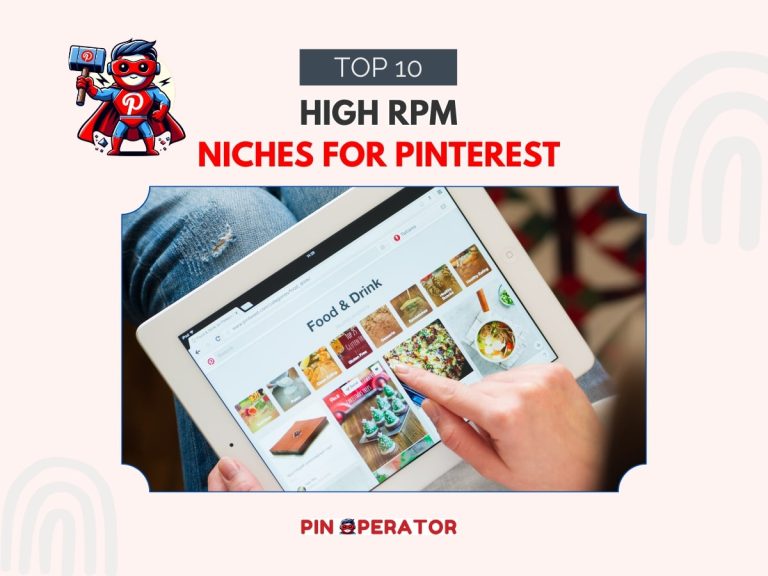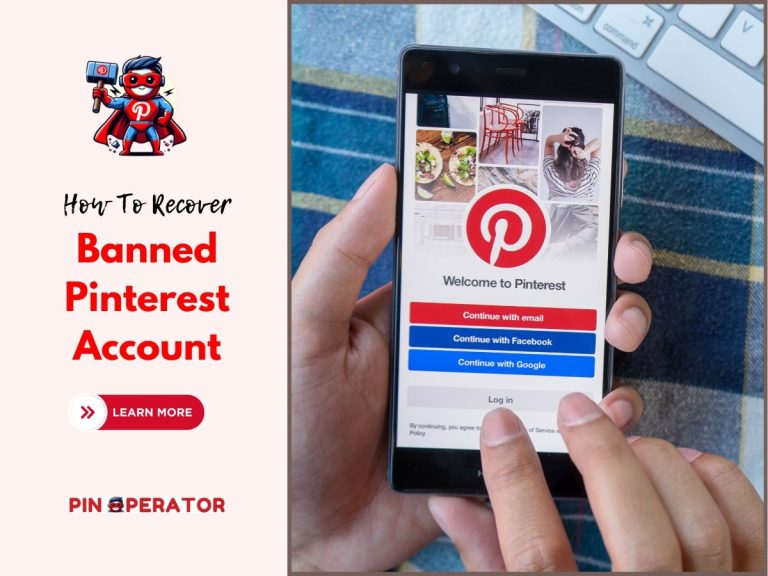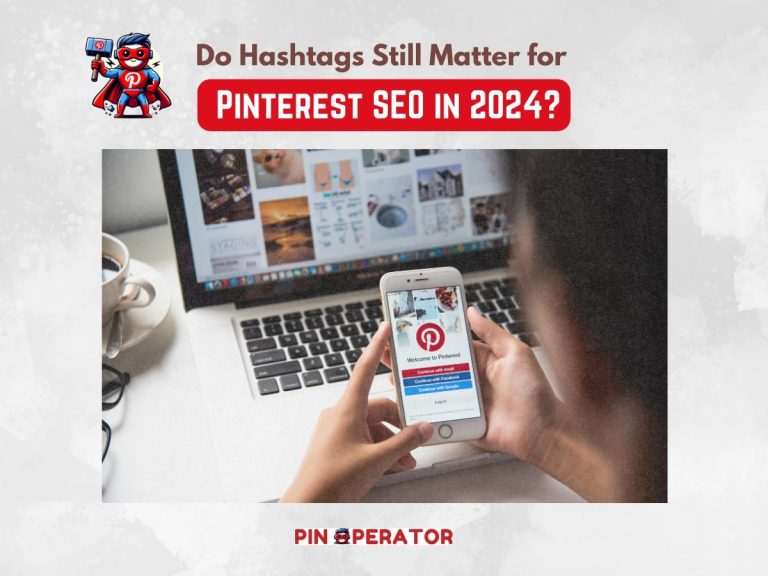19 Pinterest Mistakes to Avoid That Are Crippling Your Traffic
Pinterest can be a powerful tool to boost your website traffic and grow your audience, but only if you use it correctly. Some common mistakes make it tougher to achieve growth on Pinterest. It’s easy to overlook a few key aspects that could hurt your Pinterest engagement and traffic.
Don’t worry—it happens to the best of us. I’ve made these mistakes too, and that’s exactly how I’ve learned over time. By avoiding the same mistakes along with our Pinterest SEO strategy, our traffic is now growing faster than ever on Pinterest in 2024!
I’ve been using Pinterest to increase traffic to my portfolio of websites for years, and I’ve also worked for dozens of clients to manage their Pinterest accounts.
So, I have seen some common mistakes made by many website owners trying to increase their website traffic by leveraging Pinterest.
Common Pinterest Mistakes
Here’s a breakdown of the most common Pinterest mistakes I’ve seen (and fixed!). From Pinterest SEO to inconsistent pin designs, these small blunders can greatly impact your Pinterest visibility.
These Pinterest mistakes could be hurting your Pinterest engagement and website traffic. Avoid these and make sure your pins are reaching the right people at the right time.
#1. Focusing Too Much on Competitors
When you’re constantly monitoring your competitors, it’s easy to lose sight of what makes your brand unique. Pinterest users are looking for fresh and authentic content, not copies of what they’ve already seen.
Mimicking competitors may feel like a safe bet, but it usually leads to a lack of original ideas, making it harder for your pins to stand out.
Example: A small online boutique sees their competitor’s pins gaining traction, so they start designing pins with the same color schemes and style.
Instead of creating a distinctive brand, they blend in, failing to capture their audience’s attention and missing out on the opportunity to build a loyal following.
#2. Inconsistent Pin Design
Your pins need to have a consistent look and feel to establish brand recognition. If your fonts, colors, and design elements are constantly changing, it becomes harder for users to associate your content with your brand. Consistency across pins helps build trust and makes your content instantly recognizable.
Example: A beauty blogger posts high-quality content but uses different fonts, colors, and layouts for each pin.
While the content itself is great, users scrolling through Pinterest don’t instantly recognize these pins as belonging to the same blogger, causing missed engagement opportunities.
#3. Using Broad or Generic Keywords
Generic keywords like “food” or “fashion” are too competitive, making it difficult for your content to rank in search results. Instead, long-tail keywords that target a niche audience are much more effective at driving traffic and engagement.
Example: A travel blog consistently uses the keyword “travel tips.” While this is relevant, it’s far too broad. By switching to more specific phrases like “budget travel tips for Europe” or “solo travel packing checklist,” they begin to attract a more targeted audience, resulting in higher engagement.
#4. Neglecting Seasonal Keywords
Pinterest users often search for seasonal content to plan ahead for holidays, events, or seasonal trends. By ignoring this, you miss out on potential traffic spikes during key times of the year. Utilizing seasonal keywords can help you reach a more engaged audience when they’re actively searching for ideas related to your content.
Example: A home decor shop posts general decorating tips year-round, but ignores seasonal opportunities like “Christmas mantel decorating ideas” or “fall table settings.” This limits their reach during peak holiday seasons when users are searching for inspiration on these exact topics.
#5. Not Utilizing Multiple Pin Formats
Pinterest offers various formats, including static images, videos, and infographics. Sticking to one format can limit your audience’s engagement. Experimenting with different formats allows you to reach a broader audience and keep your content fresh.
Example: A fitness coach primarily posts static images of workouts. After trying video pins to showcase exercise demonstrations and infographics explaining workout routines, they notice a significant boost in engagement, as the varied formats appeal to different user preferences.
#6. Ignoring Video Pin Covers
Video pins are an excellent way to capture attention on Pinterest, but if they lack a clear and engaging cover, they can easily get overlooked. Without an attractive video cover, users are less likely to stop and engage with the content, leading to lower visibility.
Example: A travel vlogger posts several video pins showcasing stunning locations. However, the pins lack proper covers and appear as blank or irrelevant frames in users’ feeds.
As a result, viewers scroll past, unaware of the beautiful travel content inside. Adding eye-catching covers with a clear title would have significantly improved engagement.
#7. Creating Only One Pin Per URL
One common mistake is creating just one pin for each URL and leaving it at that. Pinterest allows you to create multiple pins for the same piece of content, each with a different design, format, or text overlay. This boosts the chances of your content being seen by different audience segments.
Example: A recipe blogger creates just one pin for each of their posts. They notice decent engagement but limited reach.
When they start designing multiple pins for the same URL—some focusing on the ingredients, others showcasing the final dish—the variety attracts more users and drives significantly more traffic to their blog.
#8. Random Pinning Without a Strategy
Pinning sporadically or without a clear strategy can result in inconsistent engagement and missed opportunities. It’s essential to develop a pinning strategy that defines when and how often you pin. A well-thought-out approach ensures that your content reaches the right audience at the right time.
Example: An eCommerce store pins whenever they have spare time, sometimes posting several pins in one day and then nothing for a week. This inconsistency leads to erratic results.
After setting up a consistent pinning schedule and sticking to it, the store starts to see a steady increase in engagement and traffic.
#9. Over-Relying on Automation Tools
Tools like Tailwind are great for scheduling pins and saving time, but relying solely on automation can reduce genuine interaction with your audience. Pinterest rewards active engagement, so it’s important to check in regularly, respond to comments, and interact with other pins, even if most of your content is automated.
Example: A home decor blogger uses Tailwind to schedule pins weeks in advance but rarely logs into Pinterest to engage with their followers. The lack of interaction results in fewer saves and clicks.
When they start manually interacting with their followers and responding to comments, engagement improves significantly.
#10. Failing to Refresh Old Pins
Old pins can still be valuable traffic drivers if updated with new visuals or descriptions. Many Pinterest users make the mistake of letting old content go stale, but refreshing and resharing them can bring them back to life and attract new audiences.
Example: A fashion blogger has dozens of pins from previous seasons that haven’t performed well in months.
By updating these old pins with new designs and more relevant descriptions, they begin to attract fresh interest and drive new traffic to the old blog posts, boosting overall performance.
#11. Not Claiming Your Website
Claiming your website on Pinterest is essential to access useful features like rich pins and detailed analytics. Without doing this, you miss out on tools that can improve your pin performance and provide valuable insights into how users interact with your content.
Example: A blogger posts regularly on Pinterest but doesn’t claim their website. As a result, they cannot track detailed analytics like website visits directly from their pins.
Once they claim their website, they gain access to richer data and features, helping them optimize their pinning strategy for better results.
#12. Neglecting Rich Pins
Rich pins are a powerful tool that pulls additional information directly from your website and displays it on the pin itself. By not enabling rich pins, you’re missing out on a simple way to enhance the user experience and increase the likelihood of engagement.
Example: An online store posts product pins without rich pins enabled. The pins show basic images but lack the additional product details that rich pins offer, such as pricing and availability.
Once they activate rich pins, their product information syncs automatically, making it easier for users to get all the details in one place and improving click-through rates.
#13. Pinning at the Wrong Times
Timing is everything on Pinterest. Pinning during hours when your audience isn’t active can significantly reduce engagement. Scheduling your pins to go live when your audience is most likely to be online can maximize visibility and interaction.
Example: A food blogger posts pins late at night, when their target audience isn’t active. As a result, their pins get little attention.
When they begin scheduling their posts for early evening—a time when their audience is more likely browsing Pinterest—engagement rises, leading to better results.
#14. Deleting Old Pins or Boards
Deleting underperforming pins or boards can actually hurt your overall Pinterest growth. Even if a pin doesn’t perform well immediately, it may pick up traction later. Instead of deleting, consider updating them with fresh designs or descriptions.
Example: A home organizer sees some of their older pins not performing well and considers deleting them.
However, after updating the pin images and descriptions, they notice the pins start gaining attention, driving more traffic than expected. The update approach turned underperforming pins into valuable content again.
#15. Forgetting About SEO
Pinterest is not just a visual platform; it functions as a search engine. Ignoring SEO means your pins won’t show up in relevant searches, limiting their reach.
By optimizing your pin titles, descriptions, and board names with relevant keywords, you can significantly improve discoverability.
Example: An artist pins their artwork without including descriptive keywords or proper SEO in the pin title or description.
As a result, their work is harder to find in searches. After applying basic SEO practices, such as adding terms like “watercolor art” or “original landscape paintings,” their pins become more searchable, leading to increased engagement and visibility.
#16. Blindly Following Trends
Jumping on every trend might seem like a quick way to gain traction, but blindly following trends without considering your brand’s identity can result in disjointed content.
While trends can drive temporary engagement, it’s more important to ensure that they align with your overall messaging and values.
Example: A lifestyle blogger sees a trend for neon-themed pins and quickly adopts it, even though their brand is built on minimalist, neutral aesthetics. This sudden shift confuses their audience, and engagement drops because the trendy content doesn’t resonate with their followers. Staying true to their brand would have yielded better long-term results.
#17. Minor Changes to Images for Fresh Pins
Making only small tweaks to existing pins, such as flipping the image or slightly adjusting the font, won’t create the “fresh content” that Pinterest values. Fresh pins should look visually distinct and offer new perspectives to engage users and meet Pinterest’s standards for new content.
Example: A blogger repeatedly uses the same pin image, slightly altering the font or background color each time. Over time, these minor changes don’t lead to better engagement because the pins are still too similar.
When they start creating completely new designs with different layouts and imagery, their pins start gaining traction again.
#18. Ignoring Pinterest as a Search Engine
Many users mistakenly treat Pinterest as just another social media platform, focusing solely on gaining followers and likes.
However, Pinterest is a search engine, and your strategy needs to reflect that. Ignoring search optimization means your content won’t be discovered by users actively searching for ideas or solutions.
Example: A home renovation business posts pins without adding relevant keywords in the description. They focus on gaining followers but fail to reach users searching for “budget bathroom remodel ideas.” When they start incorporating these keywords, their pins rank higher in search results, driving more qualified traffic.
#19. Focusing Only on New Pins
While it’s important to create fresh pins, neglecting older pins is a missed opportunity. Older pins can continue to gain traffic if they’re updated and reshared. It’s crucial to maintain a balance between producing new content and refreshing older, successful pins.
Example: A food blogger only focuses on creating new pins for their latest recipes, letting older, popular pins fade away. By updating older pins with new images or improved descriptions, they could maintain traffic to older blog posts, driving consistent results alongside new content.

